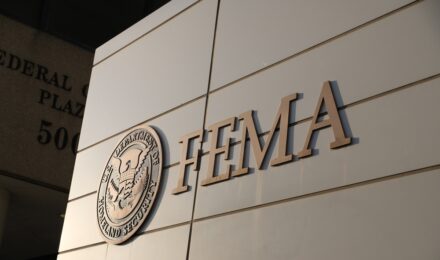With interest rates elevated in 2025, savers have more opportunities than they have had in over a decade to earn meaningful returns on their cash. High-yield savings accounts (HYSAs) and money market accounts (MMAs) are among the most popular options, each offering a blend of security, liquidity, and interest earnings. But deciding between them requires understanding how these products differ and which one fits a household’s financial priorities.
This article compares HYSAs and MMAs in today’s environment, examines their advantages and drawbacks, and offers guidance on where savers may want to park their cash this year.
The Interest Rate Environment in 2025
After years of near-zero rates, the Federal Reserve’s tightening cycle has left depositors in a stronger position. Many online banks and credit unions now advertise yields between 4% and 5% for savings products. However, these rates remain sensitive to policy shifts and economic conditions. While high yields are appealing, the differences between account types go beyond just interest. Liquidity, fees, and accessibility all play significant roles in determining which account is most appropriate.
How High-Yield Savings Accounts Work
High-yield savings accounts are a digital-era staple. Offered primarily by online banks with lower overhead costs, these accounts pass savings on to customers in the form of higher interest rates. They typically come with no monthly fees, are FDIC- or NCUA-insured, and provide easy transfers to checking accounts.
The major appeal of HYSAs is their simplicity. They function much like traditional savings accounts but at significantly higher rates. Most are managed entirely online or via mobile apps, and they integrate seamlessly with digital budgeting tools.
Understanding Money Market Accounts
Money market accounts share many features with savings accounts but often come with additional flexibility. Many MMAs issue check-writing privileges or debit cards, making them more versatile for customers who may need occasional direct access to their funds. In exchange, some institutions impose higher minimum balance requirements or fees if those minimums are not met.
In 2025, money market accounts often match or slightly exceed HYSA yields at certain banks, though this is not guaranteed across the industry. Their hybrid structure—combining aspects of savings accounts and limited transactional use—makes them attractive for households that want both yield and access.
Comparing Key Features
The decision between HYSAs and MMAs depends on specific needs. For savers focused solely on maximizing interest, HYSAs usually provide the highest rates with minimal conditions. Those who want transactional flexibility may prefer MMAs, even if it means maintaining higher balances.
Two points of comparison stand out:
- Liquidity and Access: HYSAs generally restrict access to online transfers, while MMAs may allow limited check writing or debit usage.
- Requirements and Fees: HYSAs often have no minimum balance requirements, whereas MMAs may require several thousand dollars to avoid fees.
Advantages of High-Yield Savings Accounts
HYSAs are best suited for digital-first users who prioritize yield and low fees. Their strengths include competitive interest rates, ease of management through mobile platforms, and FDIC or NCUA insurance that provides deposit protection. For short-term savings goals such as emergency funds, HYSAs offer a straightforward solution with minimal restrictions.
Advantages of Money Market Accounts
Money market accounts are advantageous for households that want to keep cash accessible without sacrificing interest earnings. Their check-writing or debit privileges can be useful for large emergency expenses, home projects, or other situations where quick access is valuable. For depositors with larger balances, MMAs may also offer tiered interest rates that slightly improve yields.
Risks and Considerations
Both account types come with trade-offs. HYSAs may limit the number of external transfers per month, slowing down access in urgent cases. MMAs, on the other hand, may charge fees or offer lower rates if balance thresholds are not met. Neither account type protects against inflation risk, meaning returns may lag behind rising living costs.
It is also important to distinguish money market accounts from money market funds. The latter are investment products that carry different risks and are not federally insured.
Future Outlook for Savers
Looking forward, yields on both HYSAs and MMAs will depend on the Federal Reserve’s policy trajectory. If interest rates stabilize or decline, savers may see gradual reductions in advertised returns. However, competition among online banks remains fierce, suggesting that high-yield products will continue to be widely available. Additionally, integration with digital financial platforms may make account management even more seamless, offering savers more tools for goal tracking and automation.
Conclusion
In 2025, both high-yield savings accounts and money market accounts provide secure, accessible options for storing cash. HYSAs generally offer the best returns with minimal requirements, making them ideal for emergency funds and short-term savings. MMAs, with their added transactional flexibility, appeal to households that prioritize access and are comfortable meeting balance requirements. The right choice depends on whether savers value maximum yield or a balance of yield and liquidity.
References
- Federal Deposit Insurance Corporation – Consumer Resources
- National Credit Union Administration – Share Insurance Coverage
- Bankrate – Best Savings Account Rates 2025
- Investopedia – Money Market Account Guide
With interest rates elevated in 2025, savers have more opportunities than they have had in over a decade to earn meaningful returns on their cash. High-yield savings accounts (HYSAs) and money market accounts (MMAs) are among the most popular options, each offering a blend of security, liquidity, and interest earnings. But deciding between them requires understanding how these products differ and which one fits a household’s financial priorities.
This article compares HYSAs and MMAs in today’s environment, examines their advantages and drawbacks, and offers guidance on where savers may want to park their cash this year.
The Interest Rate Environment in 2025
After years of near-zero rates, the Federal Reserve’s tightening cycle has left depositors in a stronger position. Many online banks and credit unions now advertise yields between 4% and 5% for savings products. However, these rates remain sensitive to policy shifts and economic conditions. While high yields are appealing, the differences between account types go beyond just interest. Liquidity, fees, and accessibility all play significant roles in determining which account is most appropriate.
How High-Yield Savings Accounts Work
High-yield savings accounts are a digital-era staple. Offered primarily by online banks with lower overhead costs, these accounts pass savings on to customers in the form of higher interest rates. They typically come with no monthly fees, are FDIC- or NCUA-insured, and provide easy transfers to checking accounts.
The major appeal of HYSAs is their simplicity. They function much like traditional savings accounts but at significantly higher rates. Most are managed entirely online or via mobile apps, and they integrate seamlessly with digital budgeting tools.
Understanding Money Market Accounts
Money market accounts share many features with savings accounts but often come with additional flexibility. Many MMAs issue check-writing privileges or debit cards, making them more versatile for customers who may need occasional direct access to their funds. In exchange, some institutions impose higher minimum balance requirements or fees if those minimums are not met.
In 2025, money market accounts often match or slightly exceed HYSA yields at certain banks, though this is not guaranteed across the industry. Their hybrid structure—combining aspects of savings accounts and limited transactional use—makes them attractive for households that want both yield and access.
Comparing Key Features
The decision between HYSAs and MMAs depends on specific needs. For savers focused solely on maximizing interest, HYSAs usually provide the highest rates with minimal conditions. Those who want transactional flexibility may prefer MMAs, even if it means maintaining higher balances.
Two points of comparison stand out:
- Liquidity and Access: HYSAs generally restrict access to online transfers, while MMAs may allow limited check writing or debit usage.
- Requirements and Fees: HYSAs often have no minimum balance requirements, whereas MMAs may require several thousand dollars to avoid fees.
Advantages of High-Yield Savings Accounts
HYSAs are best suited for digital-first users who prioritize yield and low fees. Their strengths include competitive interest rates, ease of management through mobile platforms, and FDIC or NCUA insurance that provides deposit protection. For short-term savings goals such as emergency funds, HYSAs offer a straightforward solution with minimal restrictions.
Advantages of Money Market Accounts
Money market accounts are advantageous for households that want to keep cash accessible without sacrificing interest earnings. Their check-writing or debit privileges can be useful for large emergency expenses, home projects, or other situations where quick access is valuable. For depositors with larger balances, MMAs may also offer tiered interest rates that slightly improve yields.
Risks and Considerations
Both account types come with trade-offs. HYSAs may limit the number of external transfers per month, slowing down access in urgent cases. MMAs, on the other hand, may charge fees or offer lower rates if balance thresholds are not met. Neither account type protects against inflation risk, meaning returns may lag behind rising living costs.
It is also important to distinguish money market accounts from money market funds. The latter are investment products that carry different risks and are not federally insured.
Future Outlook for Savers
Looking forward, yields on both HYSAs and MMAs will depend on the Federal Reserve’s policy trajectory. If interest rates stabilize or decline, savers may see gradual reductions in advertised returns. However, competition among online banks remains fierce, suggesting that high-yield products will continue to be widely available. Additionally, integration with digital financial platforms may make account management even more seamless, offering savers more tools for goal tracking and automation.
Conclusion
In 2025, both high-yield savings accounts and money market accounts provide secure, accessible options for storing cash. HYSAs generally offer the best returns with minimal requirements, making them ideal for emergency funds and short-term savings. MMAs, with their added transactional flexibility, appeal to households that prioritize access and are comfortable meeting balance requirements. The right choice depends on whether savers value maximum yield or a balance of yield and liquidity.







